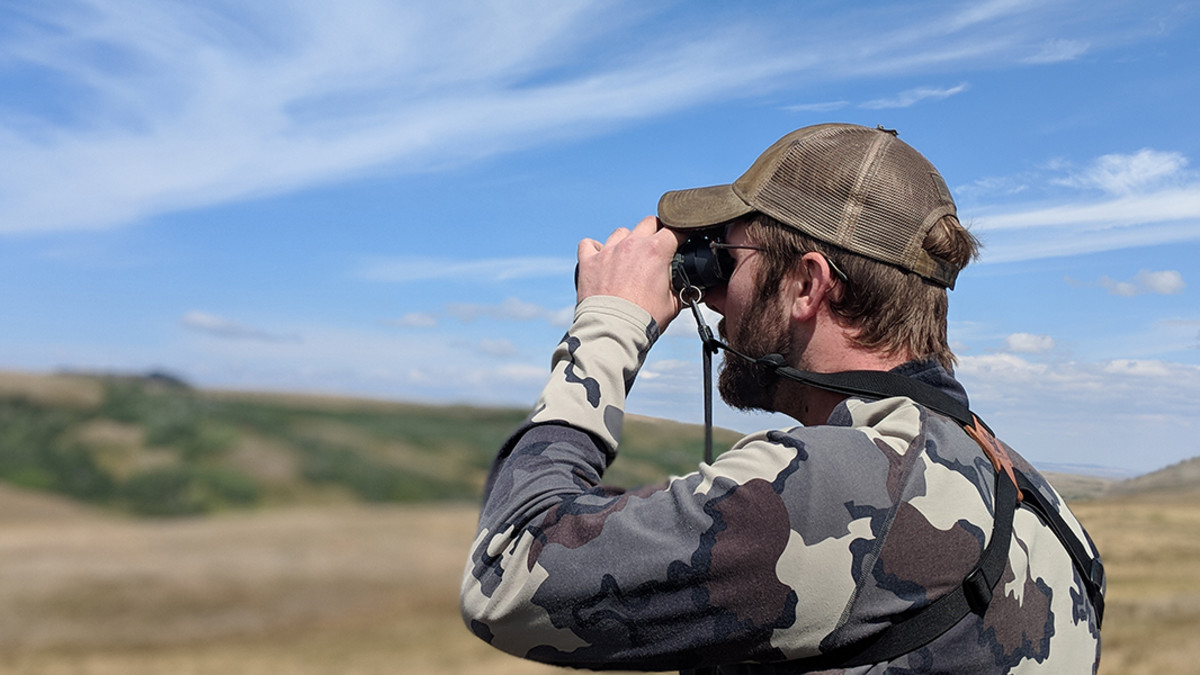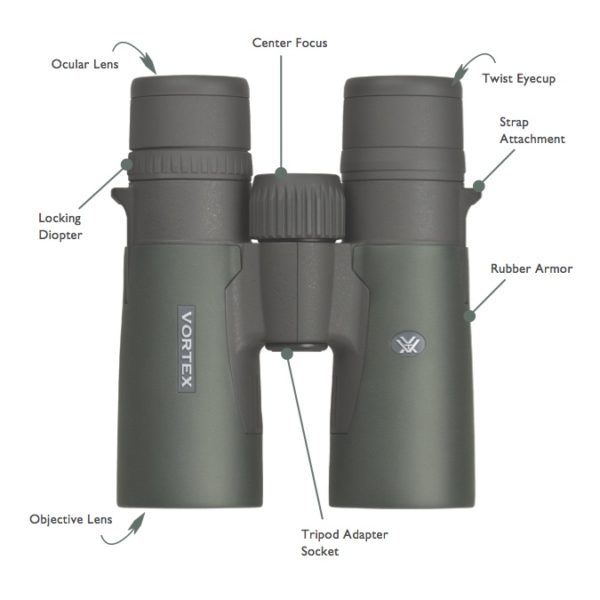
Good hunting binoculars should provide you a crystal clear image of whatever you’re looking at, be it 10 yards away or 1,000. They should not fog easily. They should not cause your eyes to ache after a day’s use. They should be glare free, even if you’re using them in the evening when the sun is low to the horizon. They should provide an ample depth of focus, meaning you’re not constantly fussing with the focal knob every time a deer takes a few steps closer to you or farther away.
Binoculars are usually described with two numbers separated by an x. For instance, you might see binoculars described as 8×32, 10×40, or 12×50. The first number, the one that precedes the x, refers to magnification. The second number, after the x, refers to objective diameter. This is typically given in millimeters.
Magnification
Magnification, of course, is the magnifying power of the binoculars or rifle scope or spotting scope. A pair of 10x binoculars, for example, produces an image as if the viewer were 10 times closer to the object. 8x magnification produces an image as if the viewer were 8 times closer. The amount of magnification you need depends on how you are using your binoculars.
If you intend to free-hand your binoculars (use them without a tripod), stick to 8x and 10x models. With any more magnification, the image is likely to appear shaky. Deciding between 8x and 10x is a matter of personal preference. As a general rule, though, 8x are great for Eastern hunting applications while the extra power of 10x binoculars comes in handy when surveying the wide-open expanses of the West.
Objective Diameter
As for the objective diameter, a pair of binoculars will produce increasingly brighter and sharper images as the objective diameter increases. A pair of 8×40 binoculars, then, will produce a brighter and sharper image than an 8×25, even though both enlarge the image an identical eight times. When shopping for binoculars, you’ll see that many models are offered with three different objective diameters: 30, 40, and 50. (Or 32, 42, and 50.)
For general, all-around use, an objective diameter of 40 is hard to beat. If you don’t rely too heavily on binoculars, and you value lightweight gear, go with the 30 or 32. If you feel naked without a pair of binoculars against your face, and you don’t mind the extra weight, go with 50.
Here are few other things to keep in mind when shopping for binoculars:
Prism design refers to how an image is “righted” after passing through the objective lens of the binocular. You can easily tell them apart easily because roof prism binoculars typically have two straight barrels while porro prism binoculars have barrels that bulge out beyond the eyepiece. Porro prism binoculars look more old-school; that’s what your granddaddy had. Porro prism binoculars will produce a brighter image than roof-prism binoculars of the same magnification, objective size, and optical quality. However, roof-prism binoculars are generally lighter, narrower, easier to hold, and better able to withstand abuse and water intrusion. Most manufacturers of quality hunting binoculars stick with roof-prism designs, and you should too.
Coatings
Phase correction coatings are used in roof prism binoculars to enhance resolution and contrast. Porro prism binos do not benefit from phase coatings. When buying room prism ‘nocs, make sure they have phase correction coatings.
External Coatings
A quality rubberized armor coating will provide a secure, non-slip grip and external protection. Make sure your ‘nocs have it.
Quality optics are filled with argon or nitrogen to eliminate fogging inside of the binocular. Make sure your ‘nocs have it.
Spend the money and buy binoculars with a lifetime warranty. Manufacturers that back their products with such force are usually building a product of value. Some of the companies will charge you for parts to repair a broken piece, while others, like Vortex Optics, have an unconditional no-charge warranty that states they will repair or replace damaged or defective products at no charge regardless of how it happened or whose fault it was.
Binocular Harnesses
Although many hunters still use a simple padded neck strap to carry their binoculars, there are much better alternatives. Chest carriers keep your binos handy and bounce-free, even when you’re crawling on your hands and knees or squirming under a fence. The device also has a few small pockets for essentials such as a lens cloth, diaphragm calls, a lighter, and an extra couple rounds of ammo.
Steadiness is Clarity
Get a tripod for your ‘nocs. No matter how stable you think you are while free-handing your binoculars, you’re actually not. Wind, fatigued muscles, heavy breathing from exertion, and even just your own pulse all make your binoculars jiggle around like a nervous chipmunk. If you don’t believe me, mount your binoculars on a tripod and see the difference. With the stable platform, you’ll start noticing small movements in the surrounding landscape that would have escaped your notice with a freehand hold: a chickadee flitting around in the bushes across a field; a porcupine uncurling from its slumber in the crotch of a distant tree; the slight twitch of a buck’s ear in the shade of a juniper.
Try this method and you are virtually guaranteed to spot more game. For an excellent tripod and adapter system that are compatible with most binoculars, visit the Outdoorsman’s tripod options.





